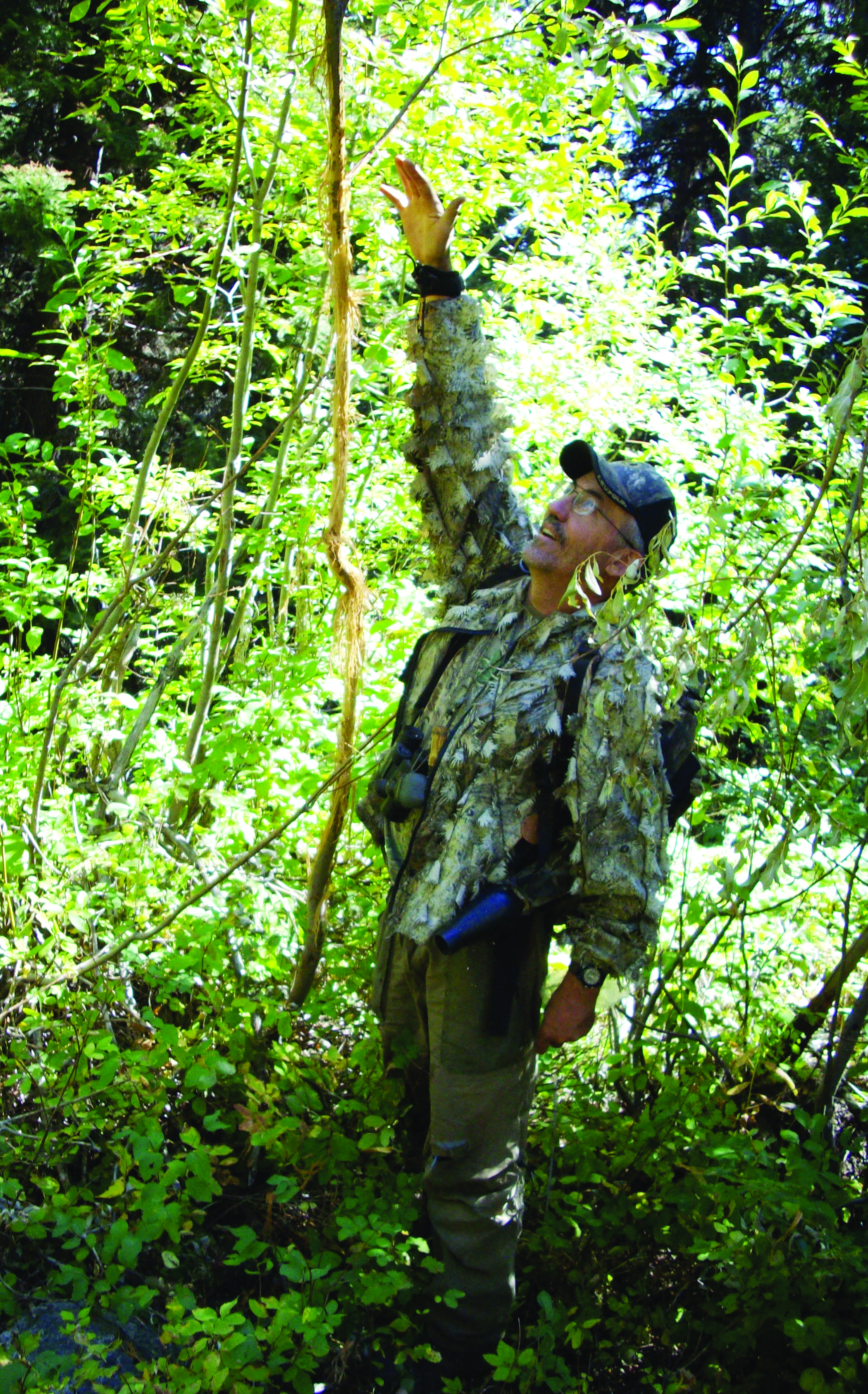OK, I’m pushing the limit on timing for this topic but what do you do if you’re an outdoor writer out West.
There’s always so much going on out here that I could write 2-3 articles per week most weeks but since I’m not allowed to write a daily article I try to cram in as many articles as possible as fast as I can.
To properly scout in a perfect world, you should start scouting 4-6 weeks before opening day.
If you find a fresh tree like this that a bear has dug into, there’s a good bear in the area.
But due to work schedules, family obligations etc. etc.
That’s not a possibility for 99.999% of us so we end up doing the best we can with what few precious minutes that we have.
So, in all actuality a lot of hunters actually spend the first 2-3 days of their hunting week scouting.
After it is all said and done, no matter the obstacles in the way, the more you scout, the more successful you will be. I’m convinced, the people that spend a lot of time scouting are the most successful hunters.
There is a way to work around some of the above obstacles though. I don’t want to be devious but on your family summer camping trips wake up before daylight and go out scouting then come back to camp and cook breakfast for everyone. Same on your backpacking trips.

As high up as this bull scraped, there’s probably a big bull in this area.
If you’re smart, you’ll have 2-4 hunting spots lined out.
What if you get to your spot opening morning and six other camps are set-up there? Or the area has been burned up (Big time possibility this year)?
Or a pack of wolves has moved into your area and scattered/disrupted everything? I remember the first elk I ever shot we moved camp twice and finally got into the elk on the third camp. It can be a pain to pack up and move but remember, you’re there to kill an animal not to camp and drink lattés.
If you’re new to hunting out West big game habits change as the seasons progress.
They move according to their feed sources, weather, predator situations and so forth. For instance, if you moved here from Texas, your deer lived in the same locale if the temp was 107 degrees in August or 20 degrees in December. Whereas here, in the winter they migrate down low to escape the deep snows up high.
When you find a lot of fresh scrapes like this in a small area, set-up and try to call him in.
For instance, in early April, I was fishing near a remote little mountain town which had an elevation of 1,600 feet. I saw all kinds of deer, elk and big horns.
A few weeks later I took the family up there and didn’t see any big game. Things were melting and they had already started moving up high.
So don’t waste time scouting early in the Spring or if you do, realize they can migrate 5-20 miles higher by hunting season.
Where I moose hunt, they go down into the creek/river bottoms at night to eat and then hike up higher to sleep in the aspen groves at daylight. In a lot of places deer and elk do the same.
So, if you pattern their feeding habits, you might set-up and ambush them as they migrate up higher at daylight.
This isn’t totally true but if not molested, antelope should be in the same vicinity as where you saw them when you scouted a week or two earlier and that’s also true of deer and elk. If they’ve got a safe place to live, they probably won’t leave it until they’re pushed out.
Then when the rut is on, all reasoning goes out the door and it gets chaotic! You might see an otherwise wary buck or bull anywhere, anytime of the day.
Bears will be different. When they come out of hibernation in the Spring, you’ll find them at sundown grazing the new tender grass that is sprouting out right at the snowline.
Their stomachs are tender since they have just emerged from hibernating for 5-months and grass is what they need. I’ve seen bears at timberline grazing like a cow.
When it is said that they are feeding at timberline, that doesn’t mean they’re tip toeing a fine line right along the receding melting snowline.
They’re following the new growth that is popping up as the snow melts so they are actually feeding a way below the snow line.
As the snow melts, they’ll move up higher. Late summer when the berries start coming out, they move down lower and eat them.
As the summer progresses the berries will be ripening up higher so bears will migrate up the mountain as they ripen.
If it’s a bad year for berries, if you find a good berry patch then you should be able to find multiple bears eating in it.
Of course, on a good berry year they can be scattered all over. If it’s a dry year and not much food is available then they may be scattered all over and that is what usually motivates bears to be down in town hunting food.
And lastly, if you are hunting near a creek/river that has a salmon run about September when the salmon start running upstream hunt along the rivers. I remember on a brown bear hunt we saw 15 brown bears in one day on the river.
MORALE TO THE STORY: Whatever time that you can eke out to scout is time well spent.
Tom Claycomb is a hunting enthusiast and writes a bi-monthly column for Great Basin Sun.